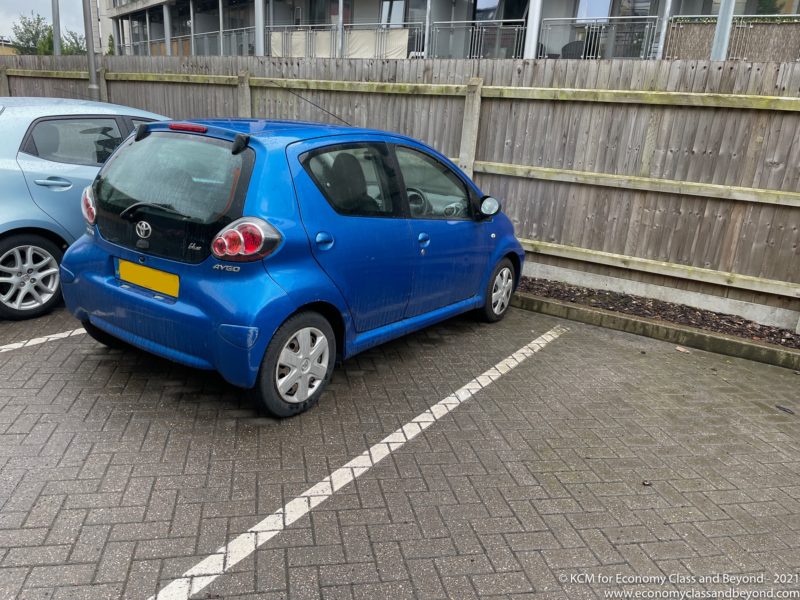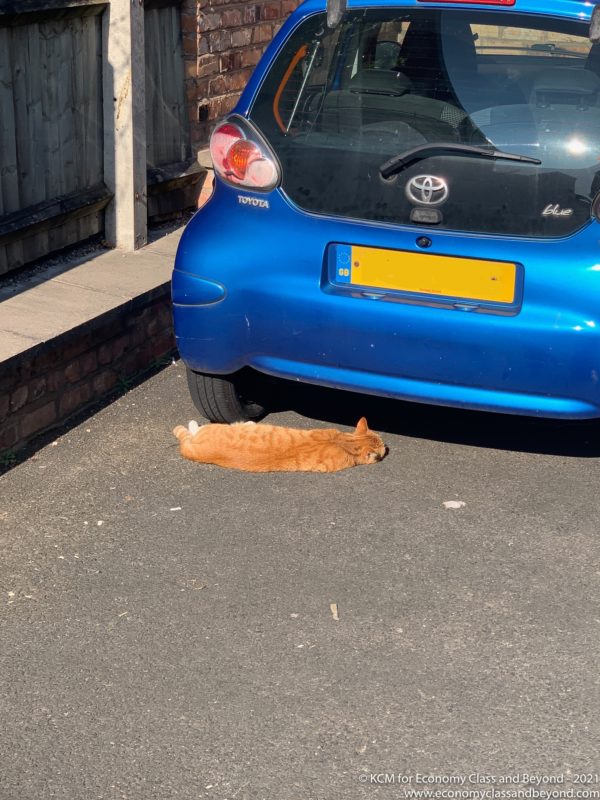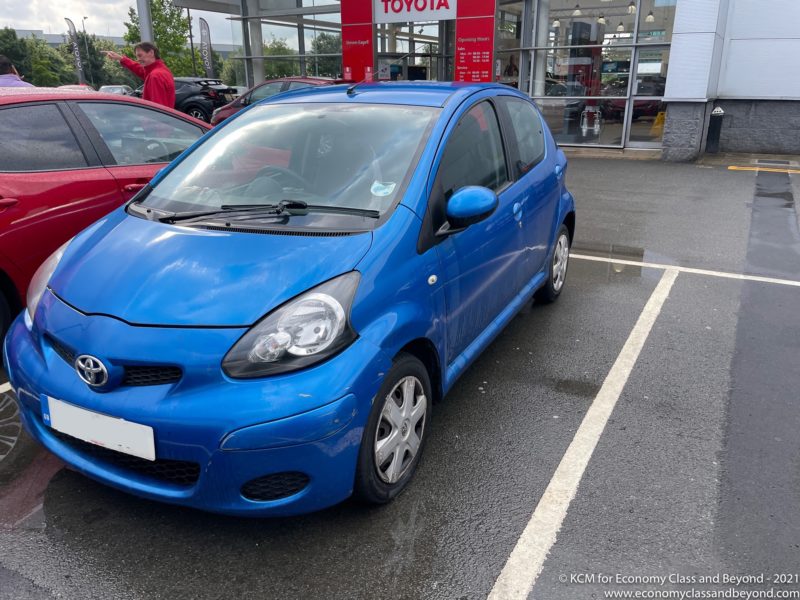Time for a long-term review – my Toyota Aygo Blue (2010). With it over 11 years old and me owning for seven of those years, how had life been with it?
And why did I finally get shot of it?
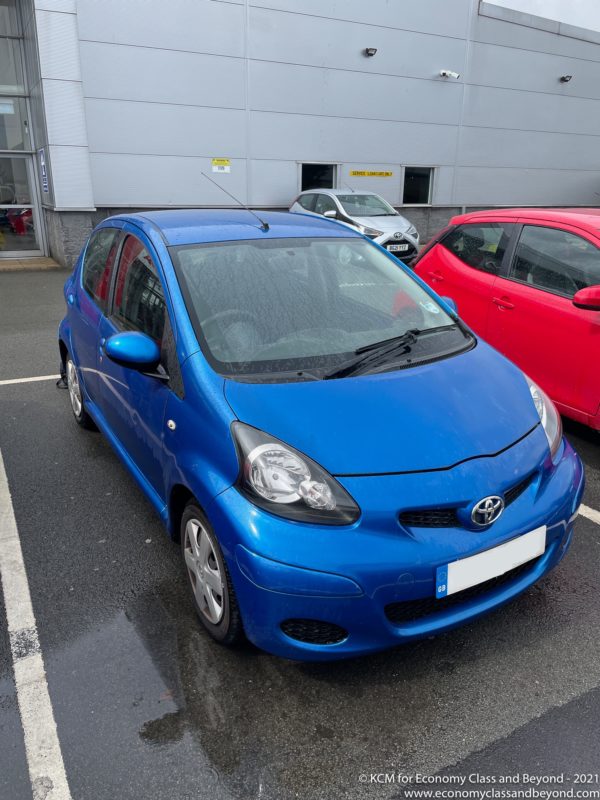
Farwell Aygo Blue… the subject of this post.
What’s a Toyota Aygo?
A Toyota Aygo is a 3 or 5 door city car, designed to be nippy around towns and cities, whilst built to a budget.
It is built alongside the Citroën C1 and Peugeot 107/108 at the Toyota Peugeot Citroën Automobile Czech (TPCA) – hence when you see an Aygo/107/108/C1, you’ve seen mostly the same car.
It has a 998cc (Petrol) or 1398cc (Diesel) rated engine, with a three-cylinder configuration, measuring just under 3 and a half meters long, designed for use in the urban jungle. It can be fitted with a multitude of options depending on your taste.
The design has been refreshed a few times, with a second iteration launched in 2014.
And of course, there are lots of versions of it, depending on whose badge is on the front.
I’ve seen them before somewhere…?
Probably on Top Gear, where they were shown to play car football – both against themselves…
And the VW Fox (now succeeded by the Up!)
It’s like real-life Rocket League. With more expensive toys. Don’t even think about the DLC costs though for the repairs…
My Aygo (AB20)
The one we’re looking at today is my beast of burden – a 2010 Aygo Blue (AB20), originally registered in Blackburn, before coming to have its second life in Birmingham in late 2014.
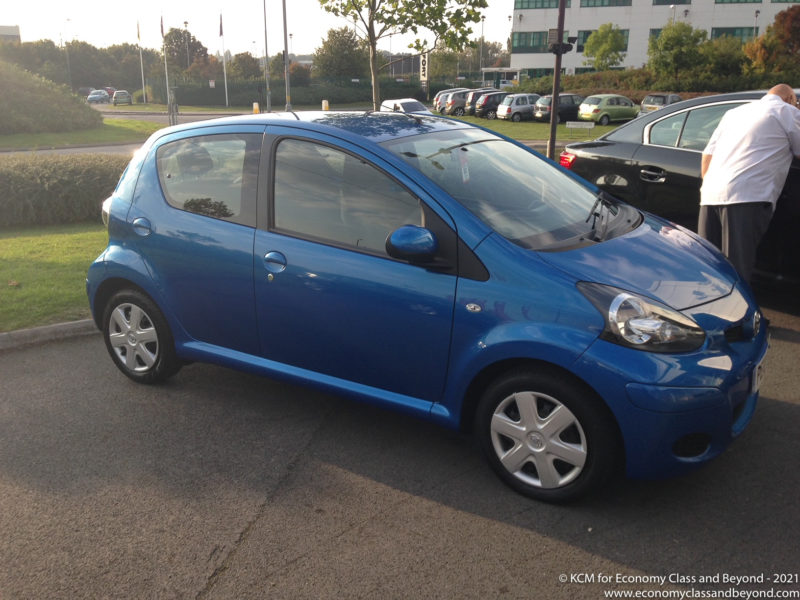
Day One with my Aygo. It’s very blue.
The basic specs are here.
It’s 3450mm long, making it good for those tight car parking spots.
Being an Aygo Blue, it has air conditioning, as well as the rest of the 2009 design of the Aygo – with its funky front panel, as well as a 998cc/3 Cylinder engine, featuring front-wheel drive and a manual gearbox, which was… very forgiving for someone who hadn’t been in front of the wheel for some years as, well as for driving.
Whilst some might scoff at that, it was nippy enough for town driving, whilst being efficient on the long-distance motorway drives, and handling twisty A and B Roads with some ease.
Petrol and Road Tax
As it falls into slightly older Vehicle Excise Duty tax brackets, the Aygo Blue cost £20 per year in vehicle tax, which was a welcome thing each year.
The car is fitted with a 35-litre tank. I typically filled it around 30 litres at a time set me back between £30 and £40 a time, mainly with supermarket unleaded 95 RON fuel. I probably once filled it twice with “branded” fuel and twice with “Super Unleaded” during the time I owned it (I never owned it long enough to test it against E10 fuel that has come into vogue in the UK).
Yes, it mainly had Tesco fuel in it, with Costco fuel towards the end of its life. Why? Because this isn’t a performance thing – this is just an A t- B city car
Considering I long I could make that last a month, it was cheap motoring, with between 250 and 350 miles between refills, it was more than economical to drive around, whilst not feeling the pinch too much.
Comfort
I had a fabric interior for the seating. And it’s held up well with me. The seats are firm, and whilst the headrest is fixed, it gives a decent amount of support. This model sadly doesn’t have audio controls on the wheel, nor a built-in Infotainment system, relying on a good FM/AM radio or CD player.
It also had an auxiliary line-in, which was great when iPhones had headphone jacks.
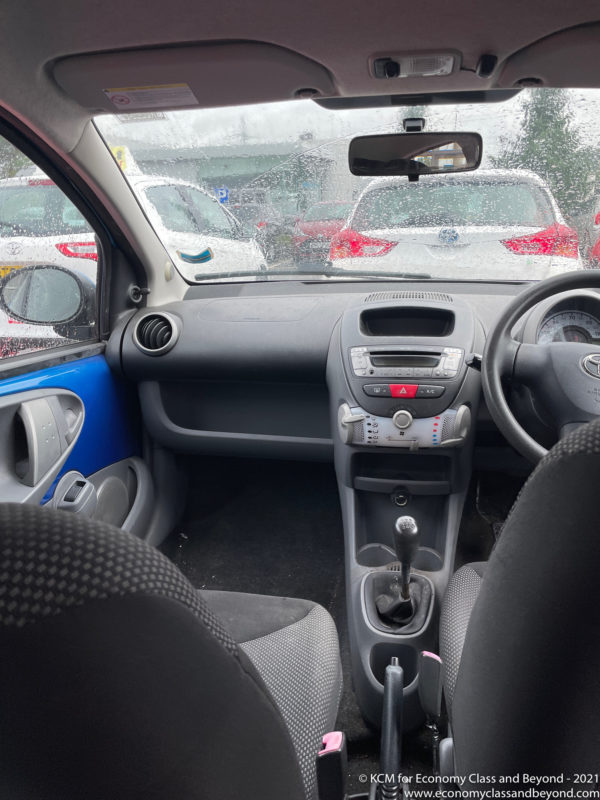
The Cabin. Radio and CD Player in the centre console. Rather basic air controls too.

The driving position, as well as 66k on the clock when it left my hands.

Yes, I was emptying the car that day.
The air-cooling worked well enough, whilst the air conditioning never seemed to be any good – to the point where I gave up re-gassing it in the end.
The driving position I found was a natural one that I could get used to quickly, with the controls all within easy reach.
Bluetooth Integration
The Bluetooth module on this thing was downright odd, to be honest. As I use Google maps to navigate a lot (don’t look at me Apple Maps fans), the only way that I could get directions over Bluetooth was to set it “play as Bluetooth call”.
This is annoying, as, after every direction change, I got a “call ended” notification from the Bluetooth System. I managed to tune that out. Riders who travelled with me wanted to kill the system, however.
I can’t say I blamed them.
I had to get a secondary Bluetooth speaker for the car at one point for the work phone too when I was doing 500 miles a week in Worcestershire, and zipping between sites on the road. These days, I tend to let the work phone ring, only pulling over *if* I have time.
And yes, I ignore Microsoft Teams calls when driving. Like everyone should. There is life beyond Teams, believe it or not.
What I used it for
I used it in my line of work primarily in the real world – visiting sites, commuting, carrying computers and so on.
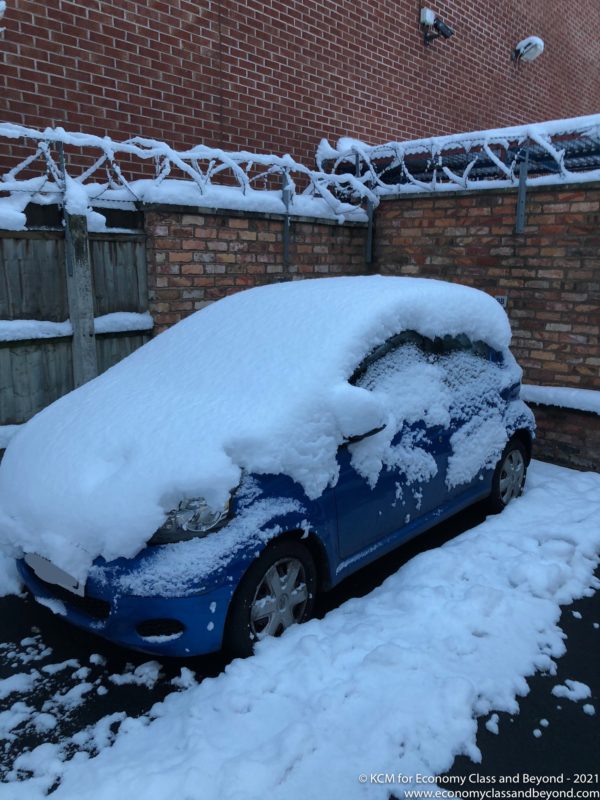
And enjoying keeping under snow
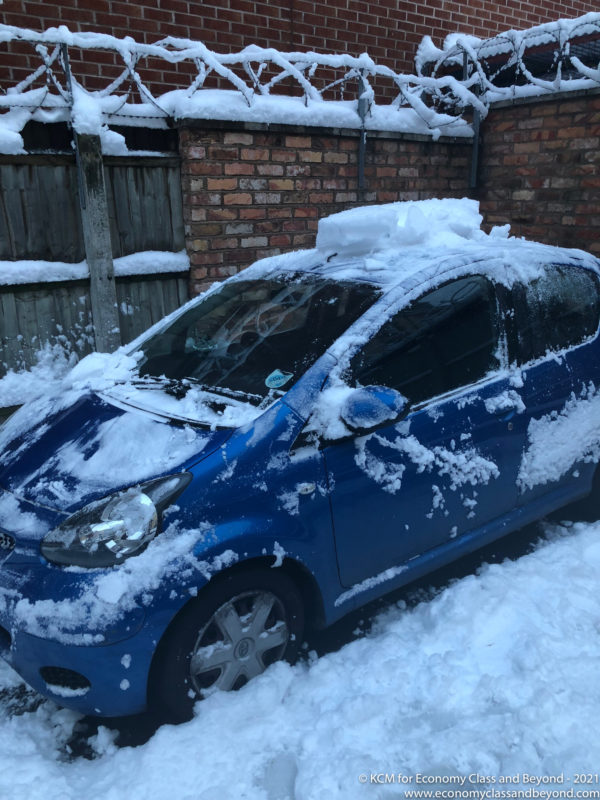
Or even giving it a Snow Mohawk.
And yes. We are talking about a city car. At one point I took 30 desktop computers in the back of the car to a site. On another occasion, I had the best part of 60 thin clients with mice in it too.
It’s been used to ship servers to sites (along with all the kit that goes with it), which can fill a boot and most of the passenger space.
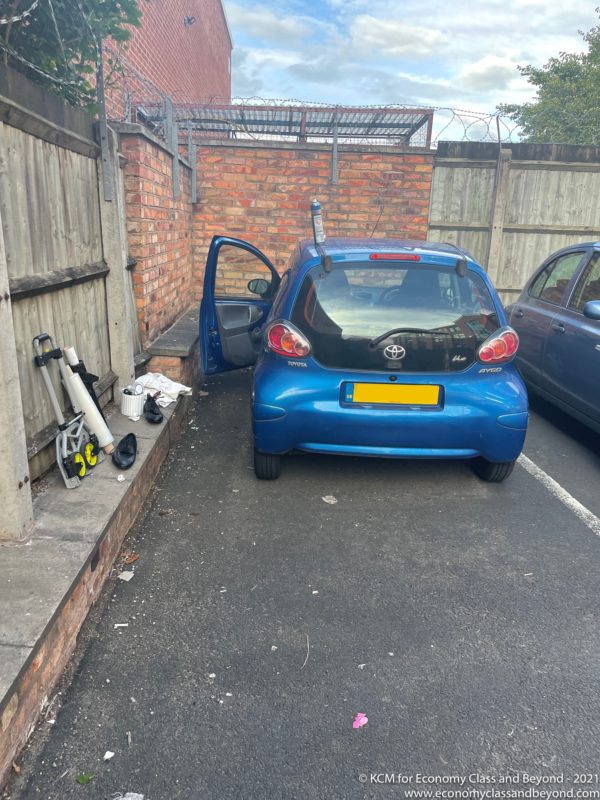
And a variety of other things too. Trolleys, shoes, you name it…
Other occasions have called for an old double mattress to fit in, a dissected old sofa when it needed to move heavy items. It also transported rolled up mattresses, 1-metre prints, as well as fitting four people in it at a time.
The car has also been my mobile office more than once – where I conducted support calls and meetings from it.
I also use it for some leisure purposes- when the train doesn’t work out for me. This has recently included trips to Nottingham (a good 50 miles each way) and to my parents (a good 150 miles or so on a good day each way).
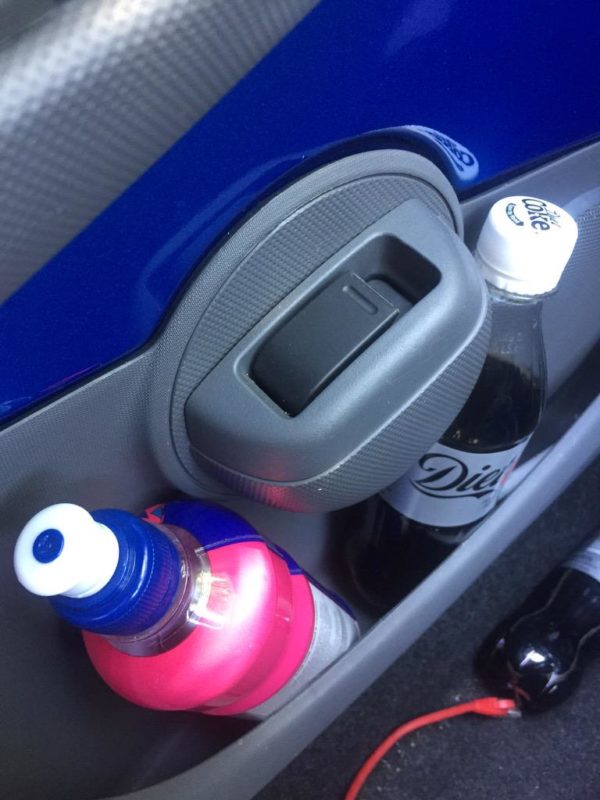
Oh yes. Drinks and network cables. Facts of life.
I do around 4,500 to 5,000 miles per year with a car. It’s a lot of city driving, with the odd long or medium distance drive, sometimes spending a month driving around Worcestershire and putting the best part of 2000 miles on the clock.
Performance
With me getting 250-350 miles per tank on a small 35ltr tank, combined with a light body, for some, the Aygo is very much a grown-up go-cart. In terms of fuel use, I was regularly getting 50mpg on urban driving, and pulling into the ’70s for motorway and fast A-roads depending on how efficiently I was driving.
Or how much my foot was on the accelerator.
On motorways, its smaller engine shows, with it being sluggish when needing extra power in for overtaking manoeuvres. Sometimes dropping a gear helped then pulling ahead. However, it could hold its own on the road, be it the chaos of the M1, the madness of the M25 or queuing on the M6.
That is more of a regular experience than I would care to admit.
Maintenance – or, how much this time?
I chose a very much “yearly” service routine with the car, due to the low mileage I was doing. Most of the costs on the car were tyres unsurprisingly, along with regular service things that need to be done.
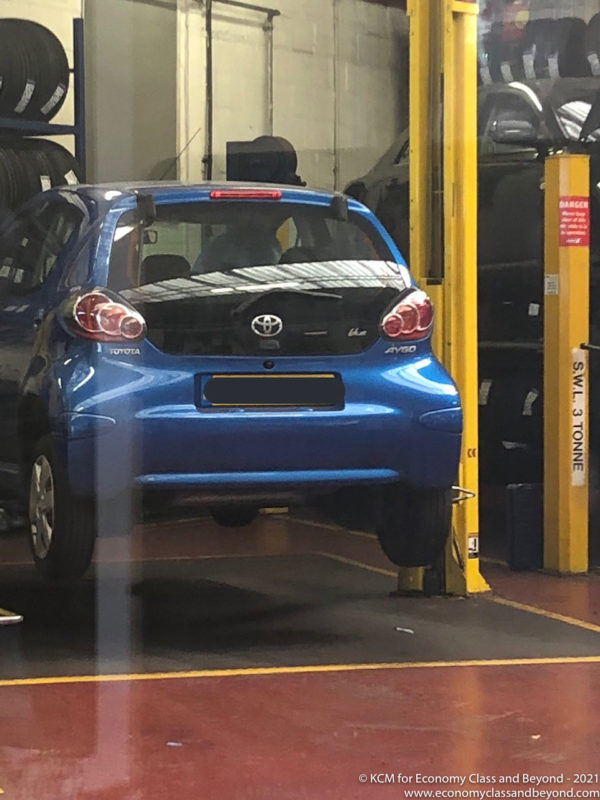
Sights I never liked. Along with the bill that went with it
Over the years, I got stung with four major repairs to the car:
- Exhaust (twice)
- Clutch (once)
- Front Suspension (both sides)
On a good year, an all-in service and MOT would set me back £150. The last service with parts and labour? £850. Which for a little car like that is… stupid.
Thus, when it came to the upcoming years’ repair bill, as well the planned repairs for the year ahead (with coil springs reported corroded, the rear wishbone needing replacing, along with tyres, sparkplugs a few other things), I spent a little time did the mathematics.
This Aygo made less and less sense by the hour keeping it – whilst I could have got maybe another year motoring out of it, I would be throwing money away to keep it on the road.
And throwing another £1000 at the car that’s getting on for 11 years, it just didn’t make financial or logical sense.
So, what’s next?
I’ve tried a few more cars out, in the test drive phase but in the end, I went for something I know.
Yes.
Another Toyota Aygo. This time… in Silver.
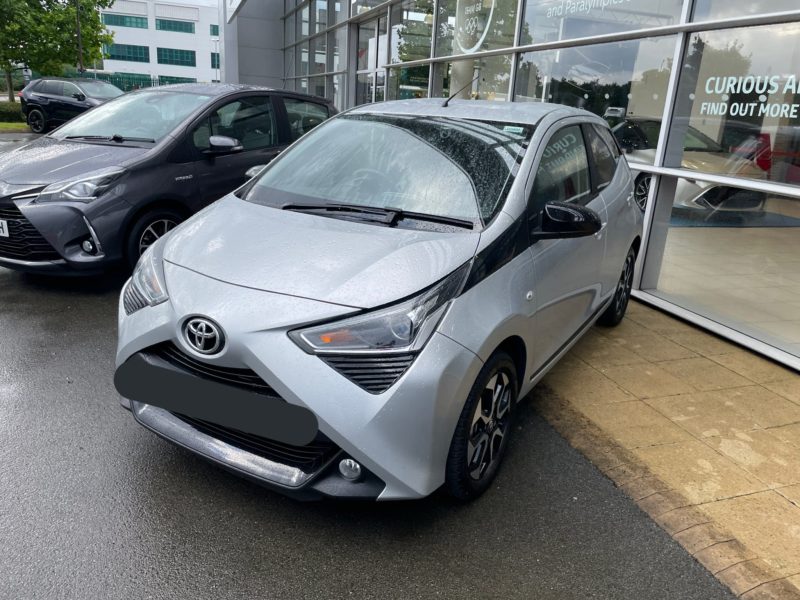
The Aygo of Gloom? Or The Aygo of More Doom?
It needs some stripes though, doesn’t it?
I did toy with the idea of a hybrid (which is a city car that is a little tougher than I’d like at the price points I was looking at) or an electric car (which has a whole other set of infrastructure problems…. such as getting a wire from the flat to a charging port in the car park) – so for now, it is a nice idea, but not one I could move forward with.
Maybe next time? Who knows.
I tried a few other cars along the way (such as a Ford Ka, Seat Mii, even the Citroen C1). But the Toyota won out. Again, the friendliness and forgivingness the car has is something I love about a car in this class.
And it’s damn fun to chuck around in traffic.
The Toyota 10-year warranty on the car too (of which I have 8 years left) is not a bad thing too.
Larger cars haven’t worked for me when I tried them – whilst the storage space to carry the world is welcome, living in a block of flat with tight parking is a no-go (as some of my fellow residents have found out to their scratched pleasure).
The other attraction is that it’s keeping my warranty on the car in check for some years to come – with 3 years of the original warranty to run, and the warranty extended provided I keep it serviced with Toyota.
An enjoyable number of years – but time to move on
Owning the Toyota Aygo 2010 Blue was not a bad experience at all – being my first car.
Yes – this was my first car.
Before that, the last car I drove with any serious intent was my mother’s Rover Metro Vanden in 1999 (and the shakes and rattles that thing made at 60mph).
Since then, I’ve driven when I had to (which is similar to how I drive today – I don’t tend to be driving every day of the week everywhere – I use a mixture of modes when getting around these days).
The Aygo Blue did its job for the time I had it – and did it in a way that kept me happy on a monthly basis, without costing the earth (except in March of each year when it came to servicing that damn thing).
It did the job the I asked of it, time and again – the only reason I got shot of it was it was going to keep more to keep on the road than I would have liked.
I’m hoping to have just as many happy years of motoring with the new Aygo.
Welcome to Economy Class and Beyond – Your no-nonsense guide to network news, honest reviews, in-depth coverage, unique research, as well as the humour and madness as I only know how to deliver.
Follow me on Twitter at @EconomyBeyond for the latest updates! You can follow me on Instagram too!
Also remember that we are part of the BoardingArea community, bringing you the latest frequent flyer news from around the world.
